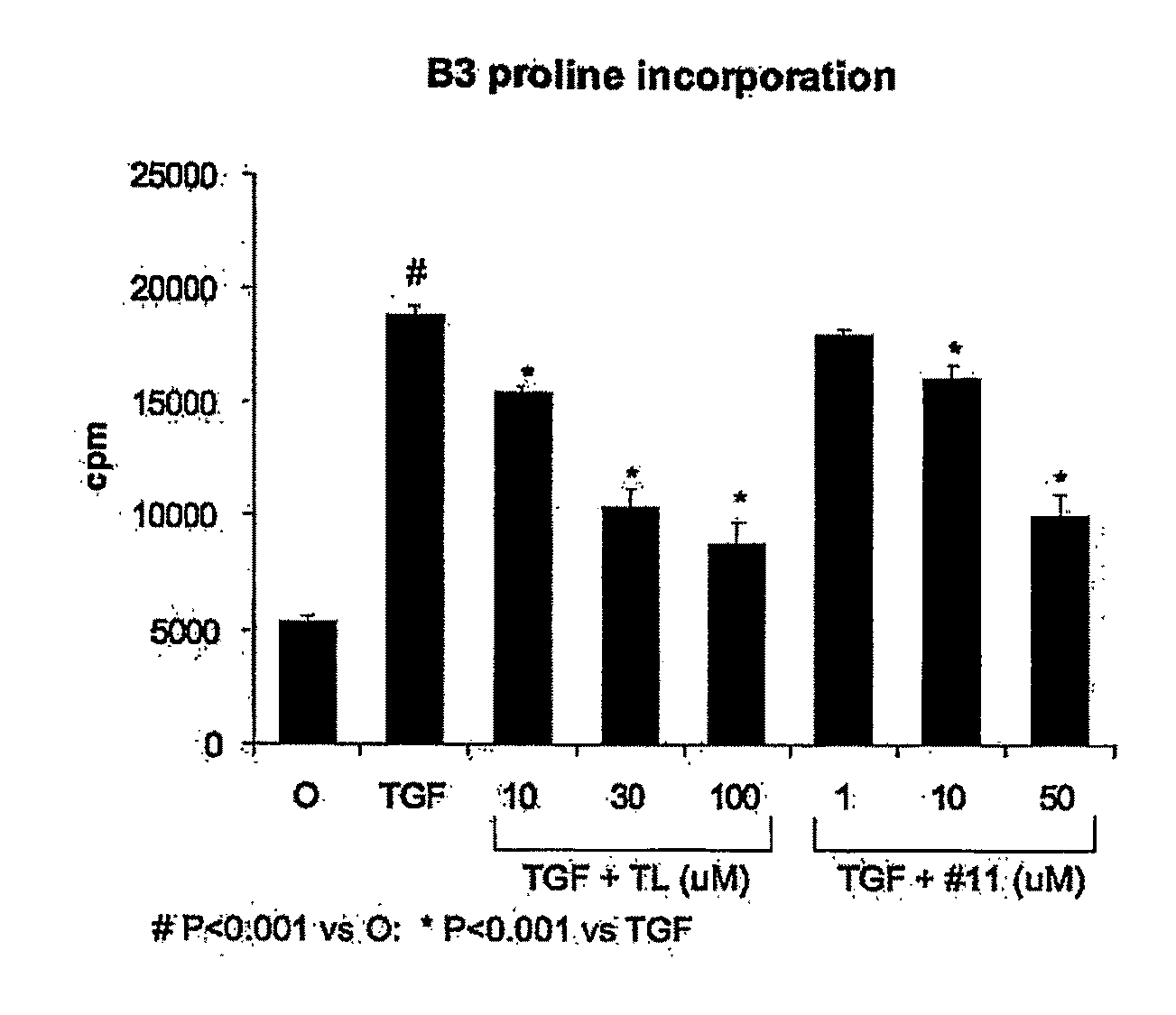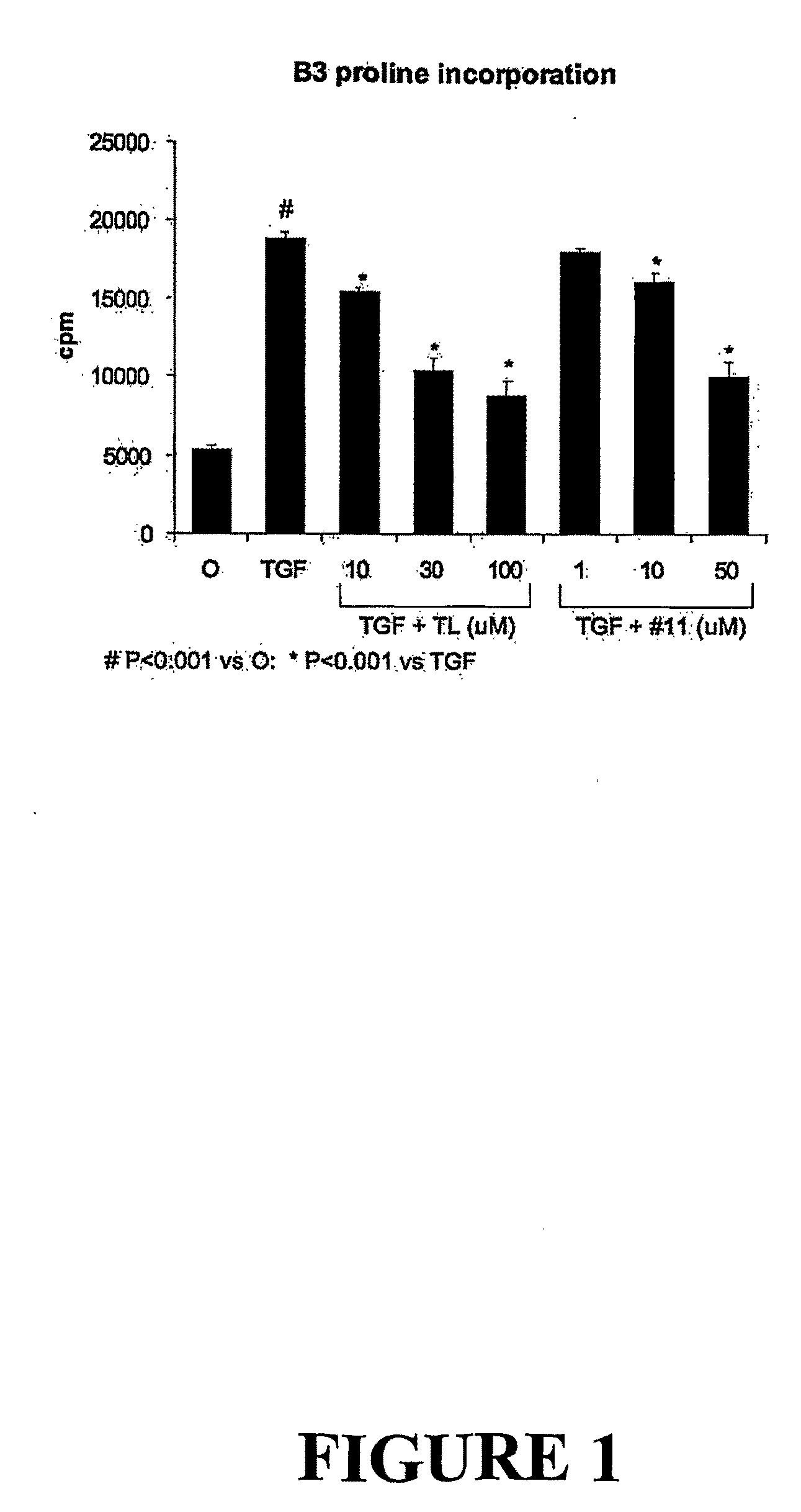Therapeutic Compounds
a technology of medical disorders and compounds, applied in the field of therapeutic compounds, can solve the problems of cardiac dysfunction continuing to progress in the majority of patients, and achieve the effect of enhancing antifibrotic activity
- Summary
- Abstract
- Description
- Claims
- Application Information
AI Technical Summary
Benefits of technology
Problems solved by technology
Method used
Image
Examples
example 1
General Description of Synthetic Chemistry
[0217]Two general approaches were used for the synthesis of various substituted cinnamoyl anthranilates. In the first approach via a piperidine-catalyzed Knoevenagel condensation of a carboxyacetamidobenzoic acid and a benzaldehyde derivative thereof to provide a substituted cinnamoyl anthranilate as a piperidinium salt followed by acidification and recrystallization to produce a cinnamoyl anthranilate as the free acid providing an N-cinnamoyl-4-aminobenzoic acid via the following synthesis.
[0218]In the second approach, converting a substituted cinnamic acid to the corresponding acid chloride and condensing with a 2-aminobenzamide, or aniline.
[0219]The benzaldehyde precursors required for the above reactions were either obtained from commercial sources, or were synthesized by alkylation of precursor phenolic benzaldehydes with assorted alkyl halides or alkyl tosylates (derived in turn from the corresponding alcohols). Alkylations were typica...
example 2
Cell Culture Studies
Transforming Growth Factor-β Stimulation
[0379]The anti-fibrotic effects of 3-methoxy-4-propargyloxybenzaldehyde (FT011) in a renal cell line were tested by measuring proline incorporation after transforming growth factor-β stimulation.
[0380]A well-characterized cloned mesangial cell line (1097) isolated from Sprague-Dawley rats [30] was used between passages 30 and 40. Cells were cultured in Dulbecco's Modified Eagle's (DME) medium (Invitrogen, Grand Island, N.Y.) with heat-inactivated fetal bovine serum (FBS), 100 u / mL penicillin and 100 ug / mL streptomycin in a humidified 5% CO2 atmosphere at 37° C.
[0381]To compare the effects of tranilast and FT011 on collagen production in vitro, incorporation of tritiated proline was used [40]. Mesangial cells were plated at low density into 24-well culture plates in DME / 5% FBS and allowed to adhere overnight. The subconfluent cells were starved overnight in DME / 0.5% FBS and 150 mM L-ascorbic acid (Sigma-Aldrich). Tranilast o...
example 3
[0383]Matrix synthesis may be stimulated by platelet derived growth factor (PDGF). Accordingly, mesangial cells incubated with PDGF will demonstrate proline incorporation, which is an indicator of matrix synthesis and thereby a model for fibrosis.
[0384]In order to assess the effect of FT011 on PDGF stimulated matrix synthesis, mesangial cells (prepared as described in Example 2) were incubated with FT011 or tranilast in the presence of PDGF. The results of this analysis were provided in FIG. 3. As shown in FIG. 3, FT011 inhibits PDGF-stimulated matrix synthesis (shown by reduced proline incorporation) at 30 and 100 μM concentrations. At 30 μM concentrations, FT011 is more potent at reducing proline incorporation than tranilast.
PUM
| Property | Measurement | Unit |
|---|---|---|
| thick | aaaaa | aaaaa |
| density | aaaaa | aaaaa |
| time | aaaaa | aaaaa |
Abstract
Description
Claims
Application Information
 Login to View More
Login to View More - R&D
- Intellectual Property
- Life Sciences
- Materials
- Tech Scout
- Unparalleled Data Quality
- Higher Quality Content
- 60% Fewer Hallucinations
Browse by: Latest US Patents, China's latest patents, Technical Efficacy Thesaurus, Application Domain, Technology Topic, Popular Technical Reports.
© 2025 PatSnap. All rights reserved.Legal|Privacy policy|Modern Slavery Act Transparency Statement|Sitemap|About US| Contact US: help@patsnap.com



